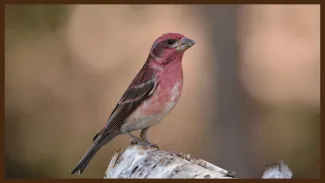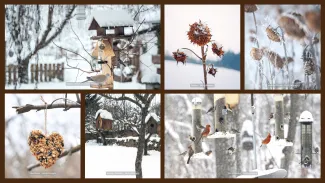As the whitetail rut gradually concludes, the invigorating northern winds sweep through the landscape, heralding the onset of fall migration and marking a significant seasonal transition. The environment undergoes a dramatic transformation as trees begin to shed their leaves, carpeting the ground in a vibrant mosaic of gold, crimson, and amber. The air takes on a brisk quality, shifting away from the familiar warmth of pumpkin spice that typically fills the atmosphere during early autumn.

With just a few minor tweaks to your gardening plans throughout the year, you can cultivate a welcoming winter backyard bird habitat. It is essential to incorporate a variety of features that will attract diverse avian species. Establishing native plants is crucial in the spring and summer, as they provide essential resources such as seeds, berries, and natural shelter in the fall. Think about including trees and shrubs as they will provide a place for birds to escape the harsh winter winds and protection from predators. Species like sunflowers, coneflowers, and viburnum can be particularly effective, offering nourishment while enhancing the aesthetic appeal of a garden. Another important tip is to resist the urge to clean up your garden too thoroughly. Leaving some flowers and seed heads standing throughout the winter can be incredibly beneficial for local birds. Many species rely on these natural structures for food and shelter during the colder months. By embracing a slightly untamed appearance, you create an inviting environment that your avian friends will truly appreciate.
In addition to native vegetation, maintaining bird feeders filled with high-quality seed mixtures can significantly increase bird activity. Options such as black-oil sunflower seeds, nyjer seeds, and mixed seed blends are known to attract various species, including finches, cardinals, and chickadees. Supplementing these feeders with suet cakes during the colder months provides additional energy sources for birds that rely on fat for warmth.

Bird baths and birdhouses are other ways to create an inviting habitat. Fresh water for drinking and bathing not only attracts birds but also provides them with essential hydration and grooming opportunities to maintain their plumage. Additionally, birdhouses offer safe nesting sites, encouraging birds to settle in your area.
When selecting or building a birdhouse, consider the size and type of the specific bird species you want to attract, ensuring it has proper ventilation and drainage. Positioning both the bird bath and the birdhouse in a safe, sheltered area can help protect birds from predators while allowing for easy visibility from your windows.
Attracting Birds to Your Backyard
Citizen Science Opportunities
Participating in The Great Backyard Bird Count, which runs from Feb. 14-17, is a 20+ year tradition that anyone can be a part of. Another annual citizen science event includes Audubon's Christmas Bird Count, which offers a unique opportunity to engage in the nation’s longest community science project focused on birds. Additionally, submitting data to Project FeederWatch allows you to further contribute to our understanding of avian populations. On those cold winter mornings by the fire, my family and I take great pleasure in watching our feathered friends, knowing that our participation supports vital conservation efforts. Join us in making a difference this season!